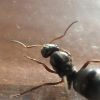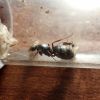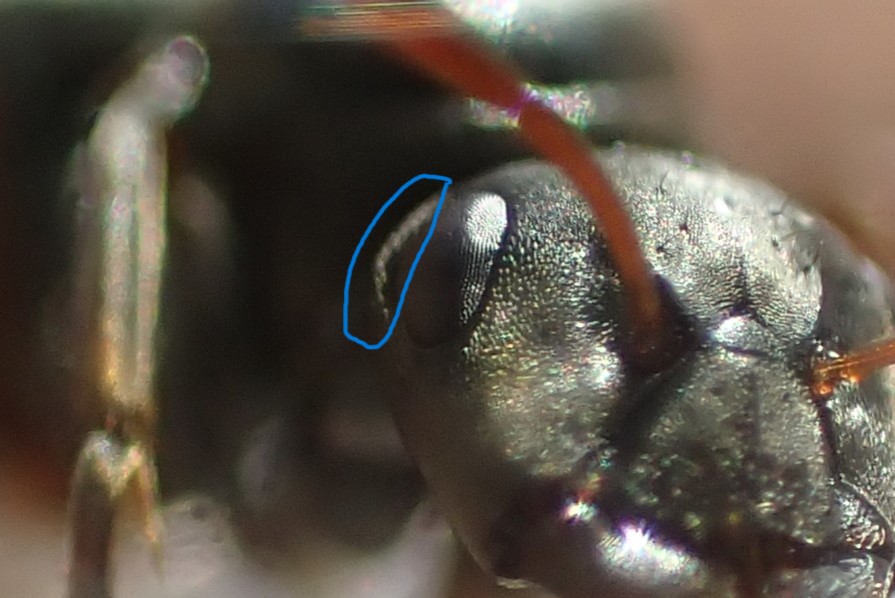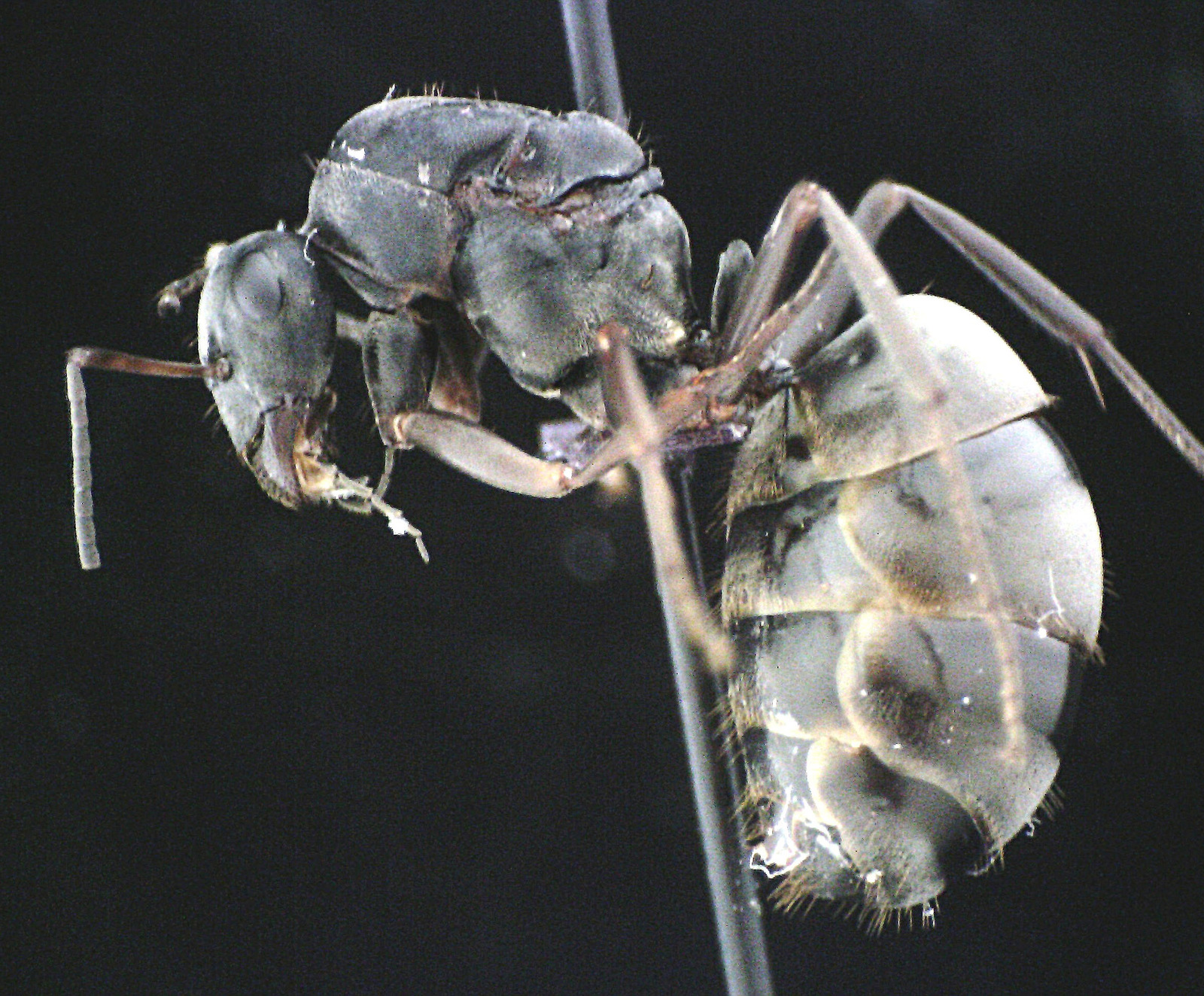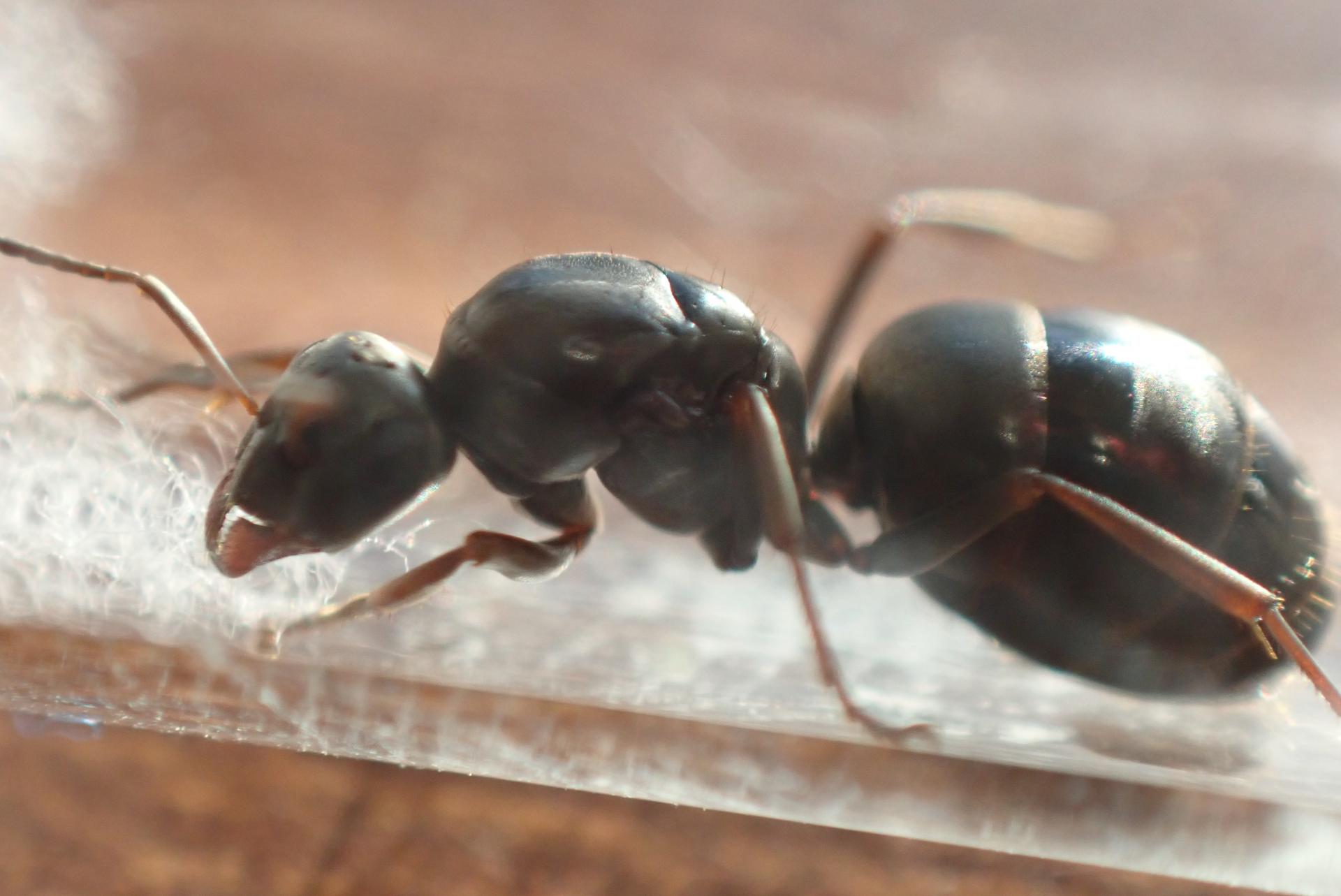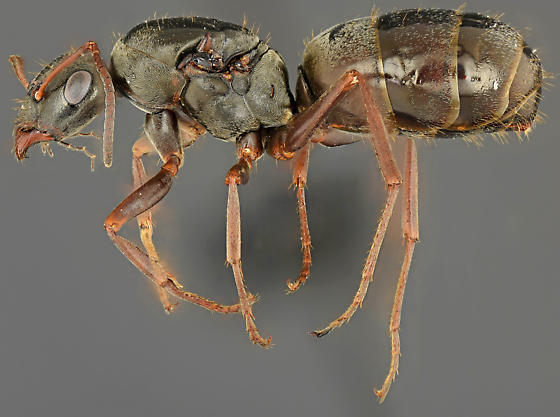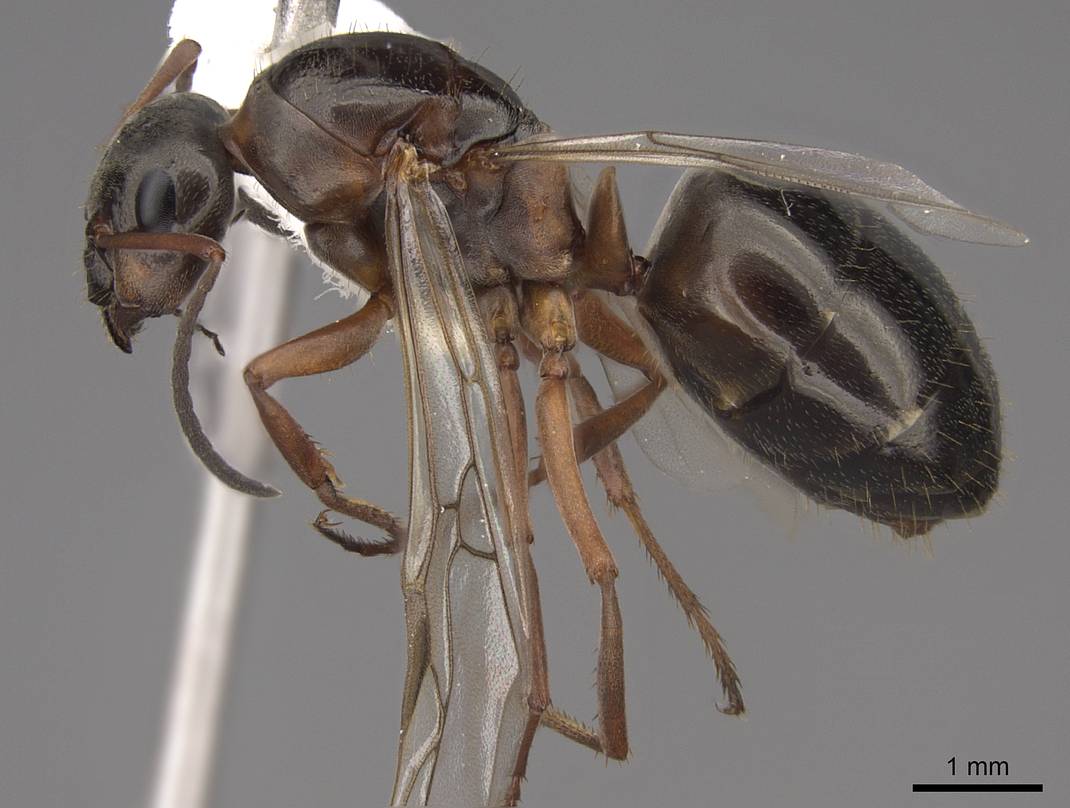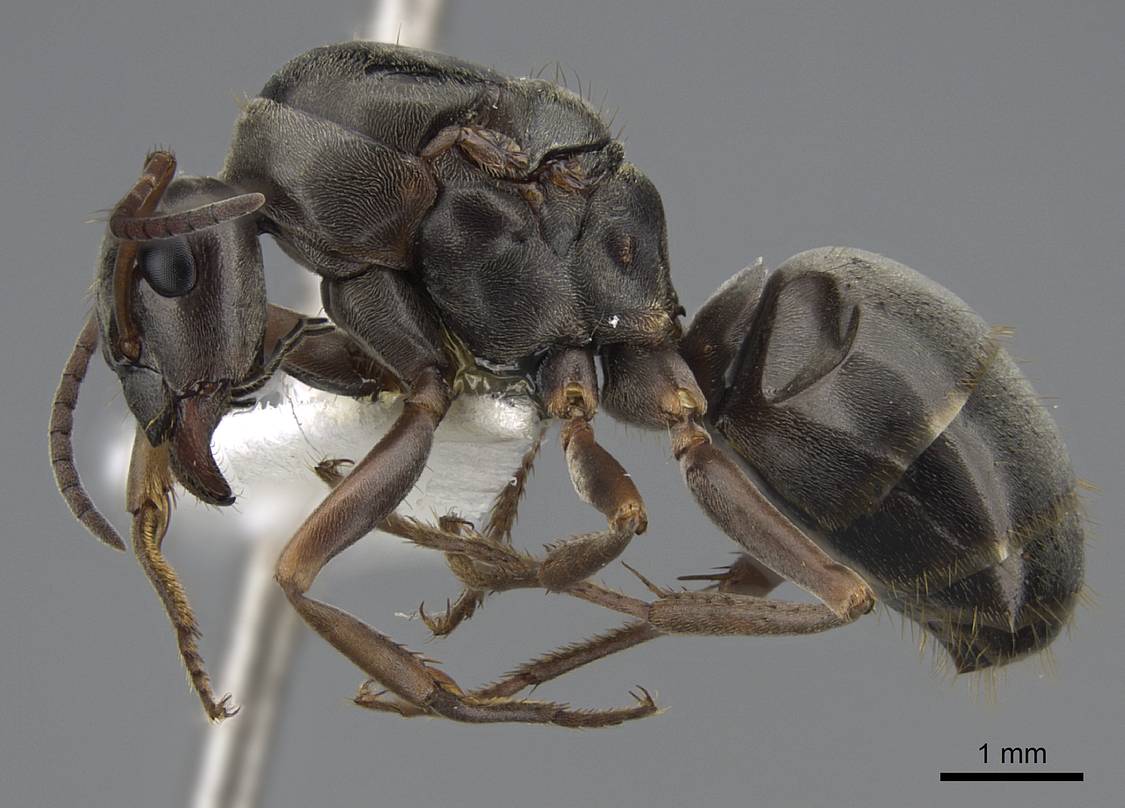Formica is a genus few are willing to touch without a stereo microscope, as alluded to by the absence of remarks on this ID thread. In general, there are also less experienced ID'ers on here willing to lend their time to an ID, even after I DMed them (one even blocked me...). This is something that saddens me, but I do understand that they have other things to do with their time. So therefore I have decided to try to learn what four years of an entomology degree teaches, as well as following GCSnelling's words of "practice, practice, practice," and attempt quite the interesting feat of identifying the queen myself, especially when this was the first thing that met my eye on the Key to Nearctic Formica fusca group queens:
Metasternum with two distinctly pilose processes, arising on each side of the spinasternal cavity (fig. 15, 42); mesometasternal profile composed of a convexity followed by an inverted triangle (fig. 33) . . . . . 2
Metasternum without such processes (fig. 195); mesometasternal profile composed of a convexity followed by a straight or concave line (fig. 34-35) . . . . . 10
Yeah, after messing around with that for 30 minutes and getting nowhere, I decided that to save myself time, I would go down to the species I believed it was and attempt an ID from there. Definitely not the right approach, but what do you experienced IDers think?
I have taken the exact quotes from the key and highlighted each criterion a different color for organization, so I hope that helps!
Pubescence very dense particularly on genre and the first four gastric tergites; big elongate punctures absent on genre, beneath and behind the eyes; posterior margin of pronotum with numerous erect hairs, varying from 4 to 20 (mean = 11), usually reaching the tegulae - Formica argentea
Pubescence (literally meaning "down") is not particularly dense on the queen at all, really only coming out in the last few tergites, which are the plates of exoskeleton you see on the abdomen of an ant. One thing I struggled with is how many of these plates there are. The Key notes the first four, so I assume there must be more. Here are two options I found.
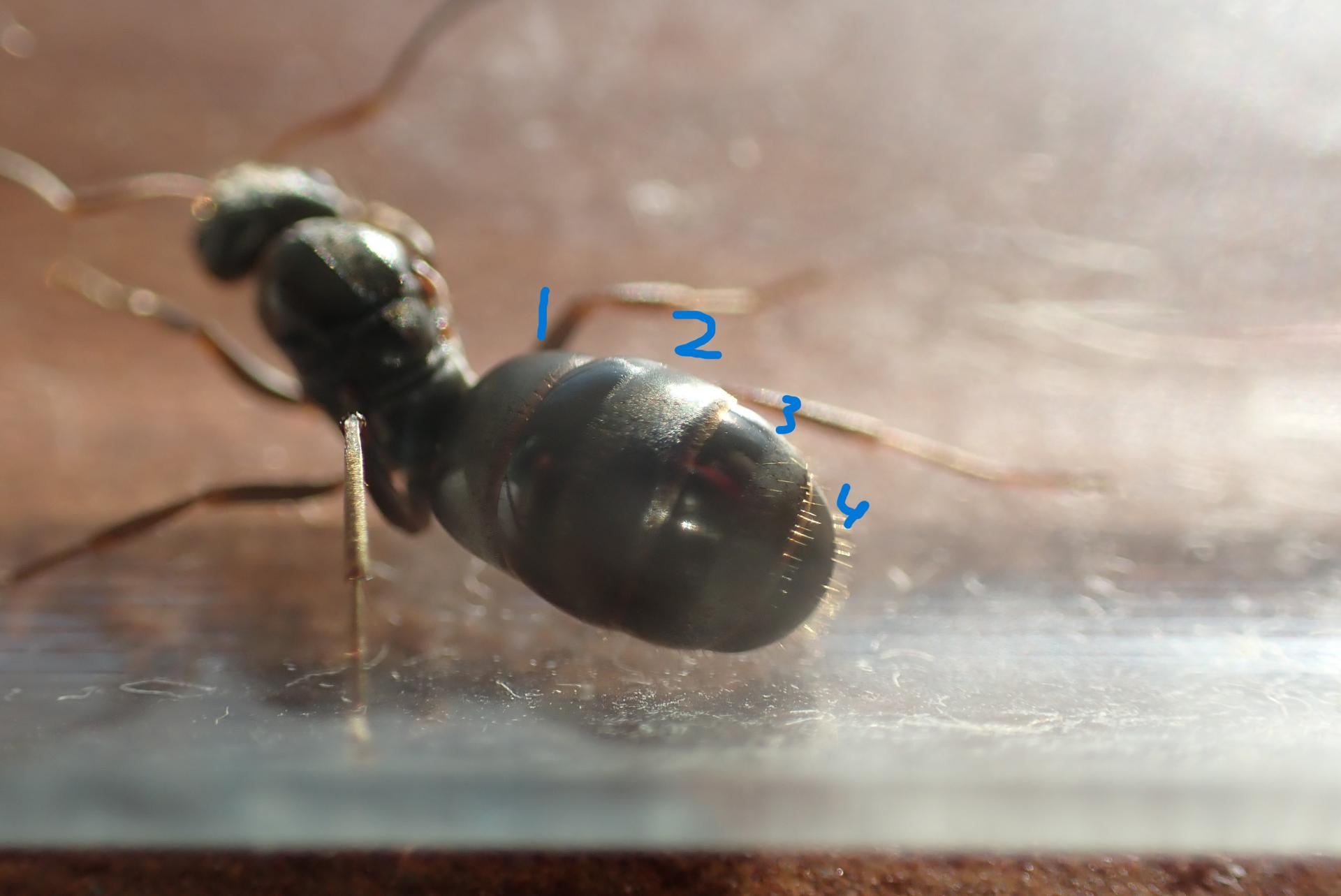

Because of the absence of images or diagrams, I am unsure what elongate punctures look like. I do, however, know where beneath and behind the eyes are, so I looked there.
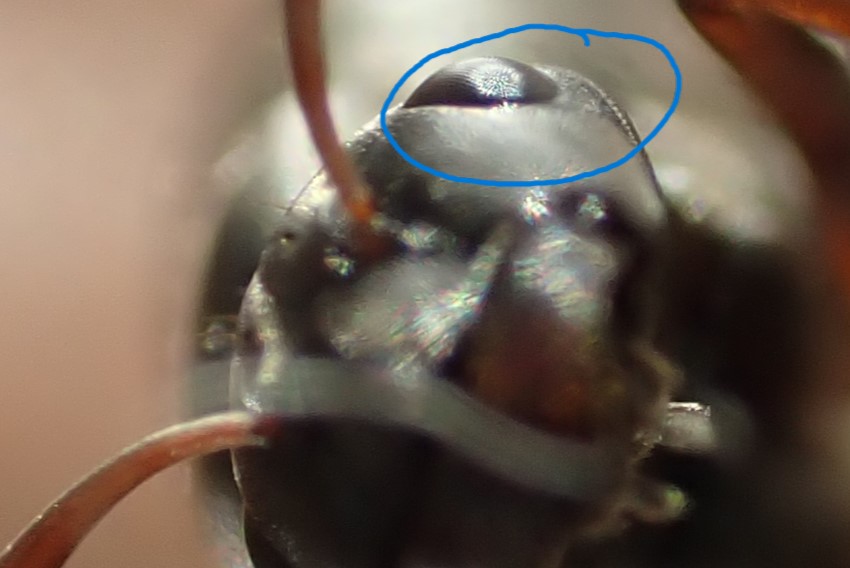
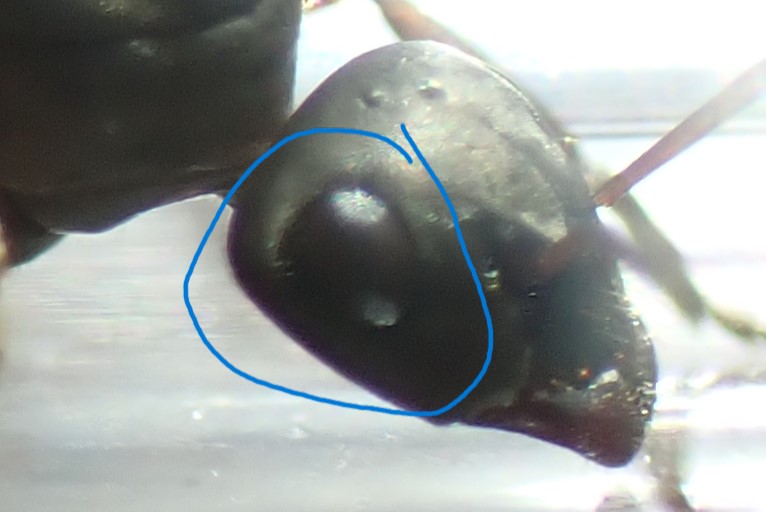
I don't see any punctures, especially big ones.
The pronotum is the front of an ant's thorax and is the section that contains the first pair of legs. Posterior means situated at the end or behind something. The tegulae is located on the mesothorax (the second section of the thorax, right behind the pronotum or metathorax, I think, and also has the second pair of legs.) and is where the wing meets the thorax. Now that I got those definitions out of the way, lets see if there is "numerous erect hairs" on my queen.
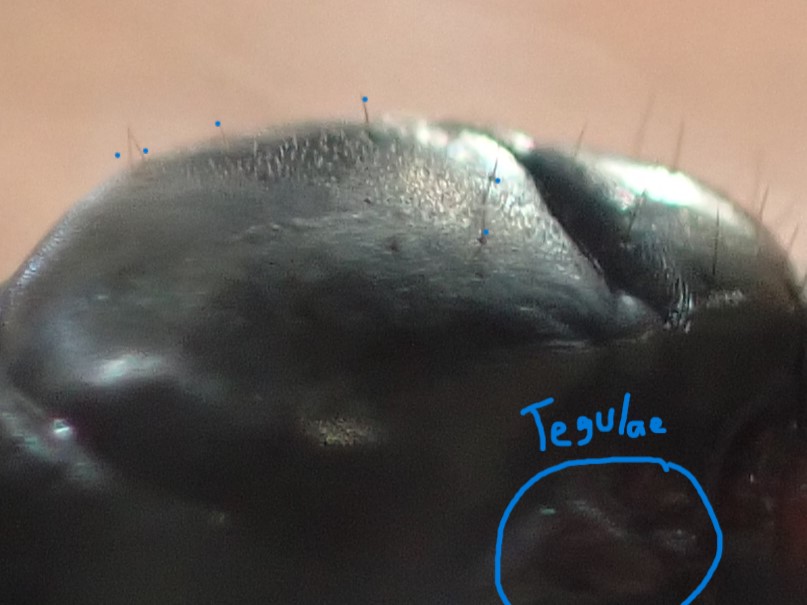
It looks like there is erect hairs there, and barely within the range. I count 6 hairs.
Overall, a 1/3 score
So, lets move on to the other possible species
Scapes longer, scape length more than 1.80 mm (fig. 251); occipital margin convex; pubescence normal on the first three gastric tergites; pilosity of pronotum limited to median half of posterior margin; erect hairs varying from 0 to 10 (mean = 2) on the first gastric tergite exclusive of the posterior row; larger species, alitrunk length from 3.55 to 4.25 mm (mean = 3.90); wings blackish; East of the continent . . . . . Formica subsericea
A scape is the first part of an antenna and is also known as the base. It is one piece, and the diagram I linked is quite helpful. I cannot measure scapes, so I cannot accurately confirm this.
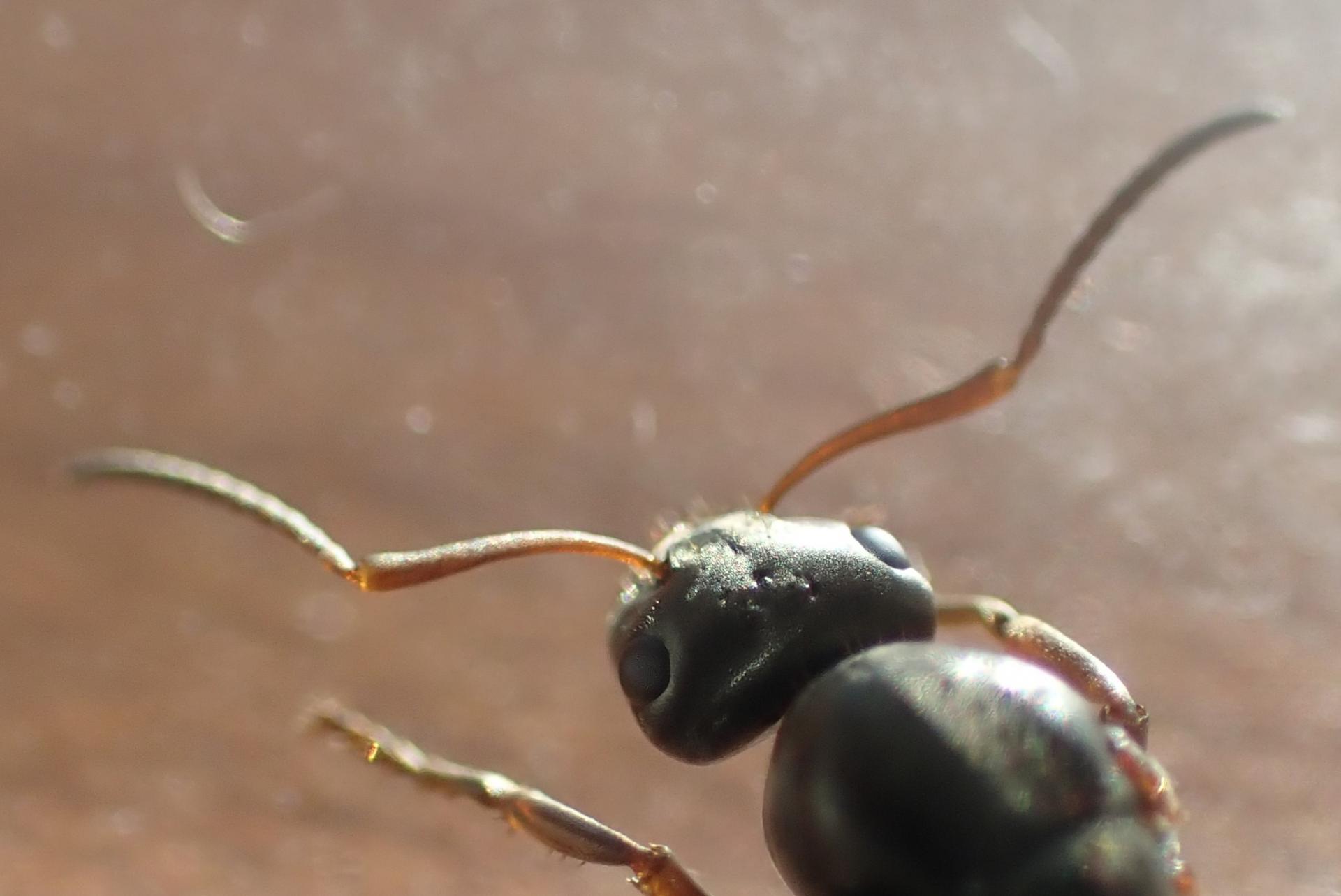
Occiput is an insect word for the back of the head, the graph should reveal the exact location. Convex means bulging outward. My answer to this line is, uhhhh maybe?
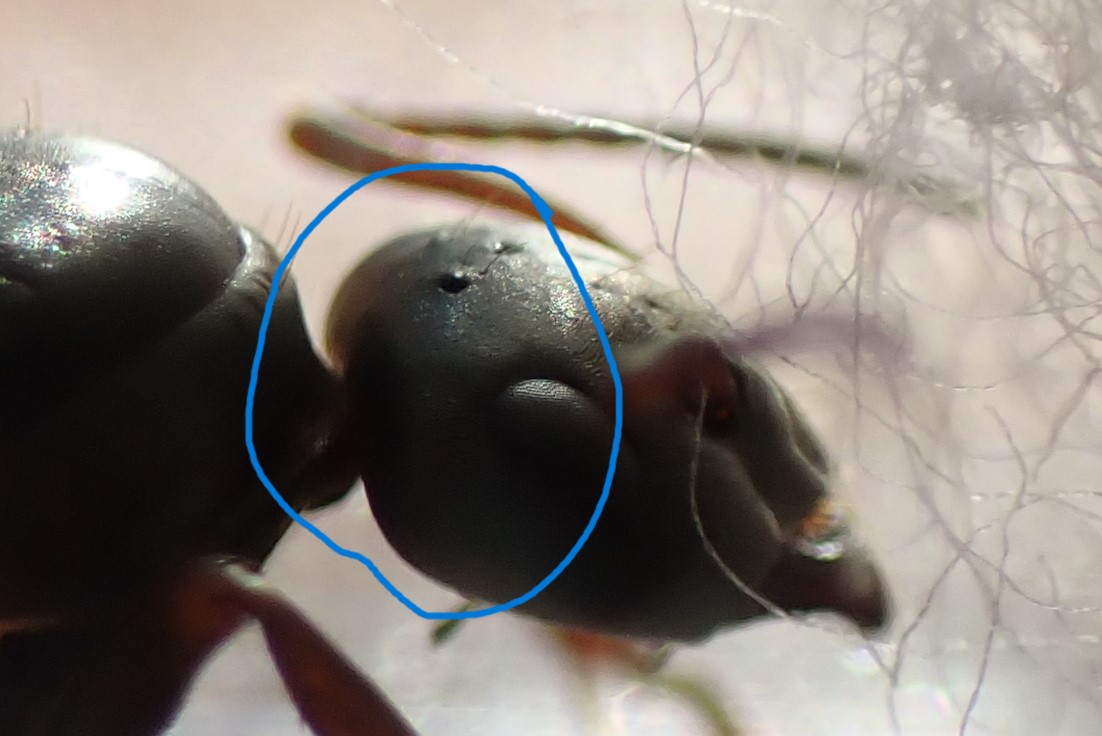
This looks pretty normal to me, and it certainly does not bulge inward.
I feel like the definition of normal is very subjective, and it also appears that there is fewer hair on the first tergites than the last couple. Again, I am still confused as to how many gastric tergites there are.
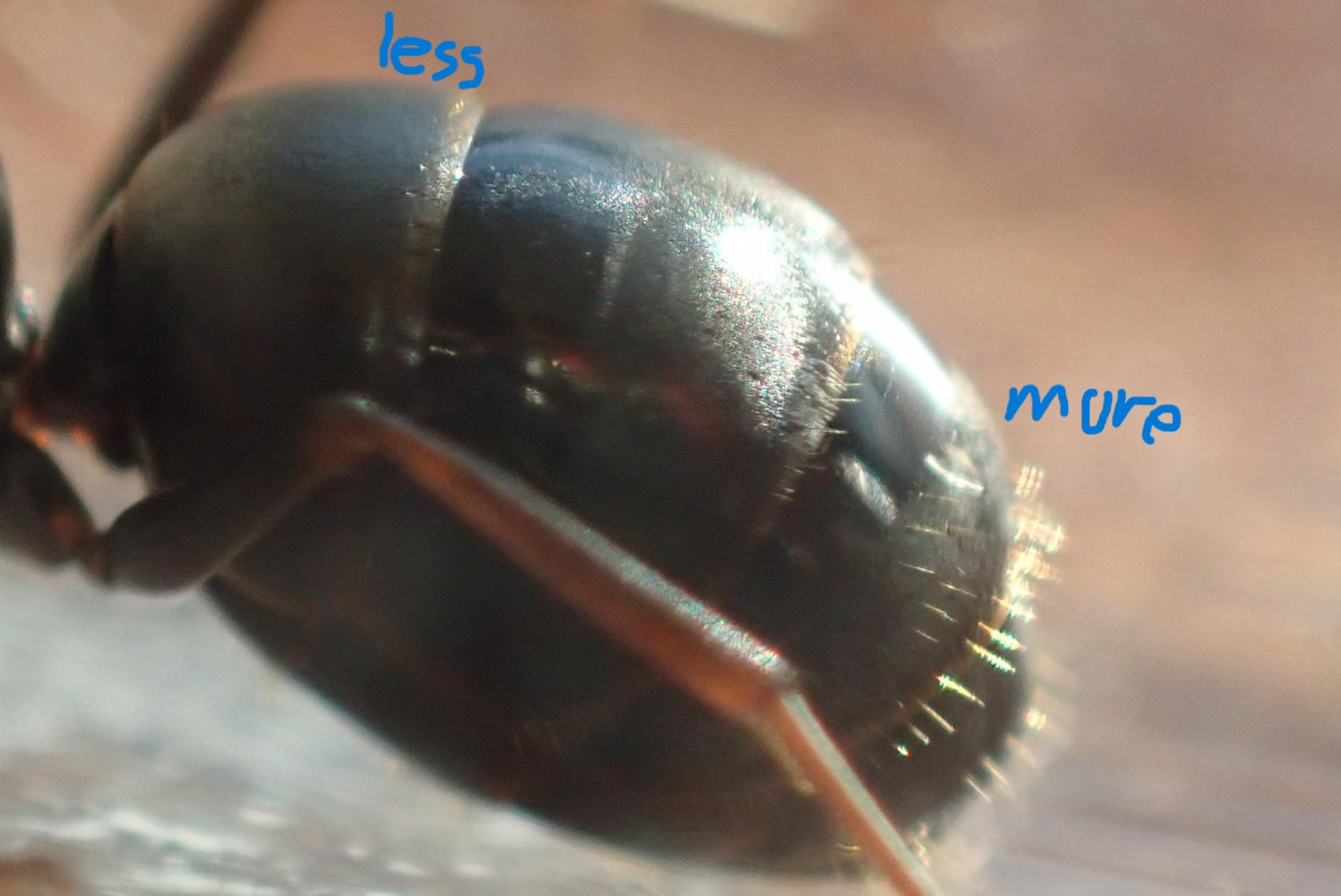
Pronotum I believe refers to the top of the first part of the thorax (the one with the first leg segment). As the source attached seems to reveal, sternum means bottom and notum means top. Posterior as mentioned above means back end. My interpretation of this foreign language ends up becoming: hair on middle of of back of front thorax section. I guess the three quarters mark? From what I can tell, the hairs seem to be on the back half of the pronotum, so maybe this line is true?

First gastric tergite is the first abdominal exoskeleton plate. I believe that "exclusive of the posterior row" means not including the row of hair at the intersection between the first and second gastric tergite, as shown in the image. Interestingly, I cannot seem to find any hair on the first gastric tergite.
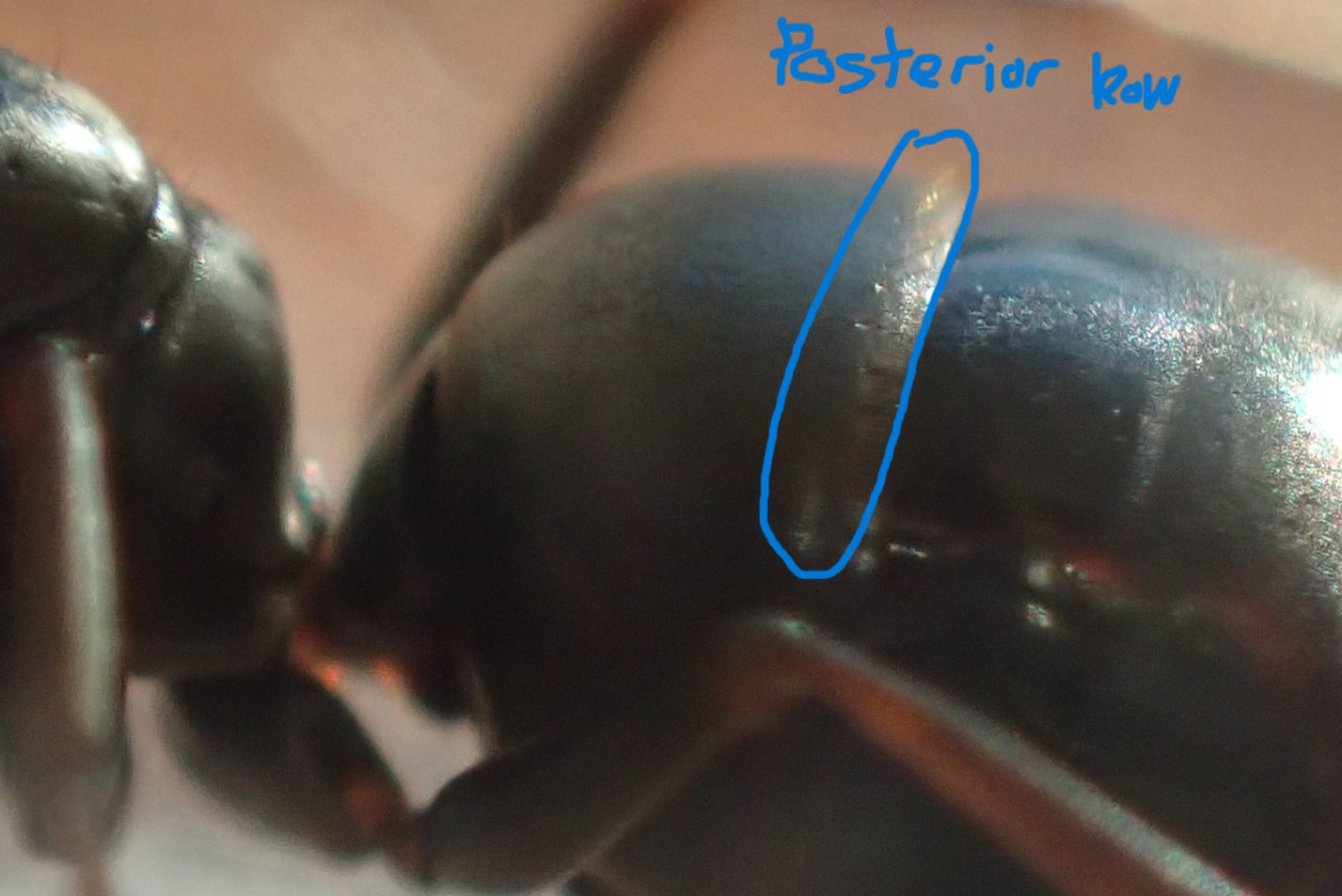
This is a larger Formica species, I can confirm that. The alitrunk is the section of the thorax that contains the wings, which is believe is on the mesonotum. I again cannot measure it.
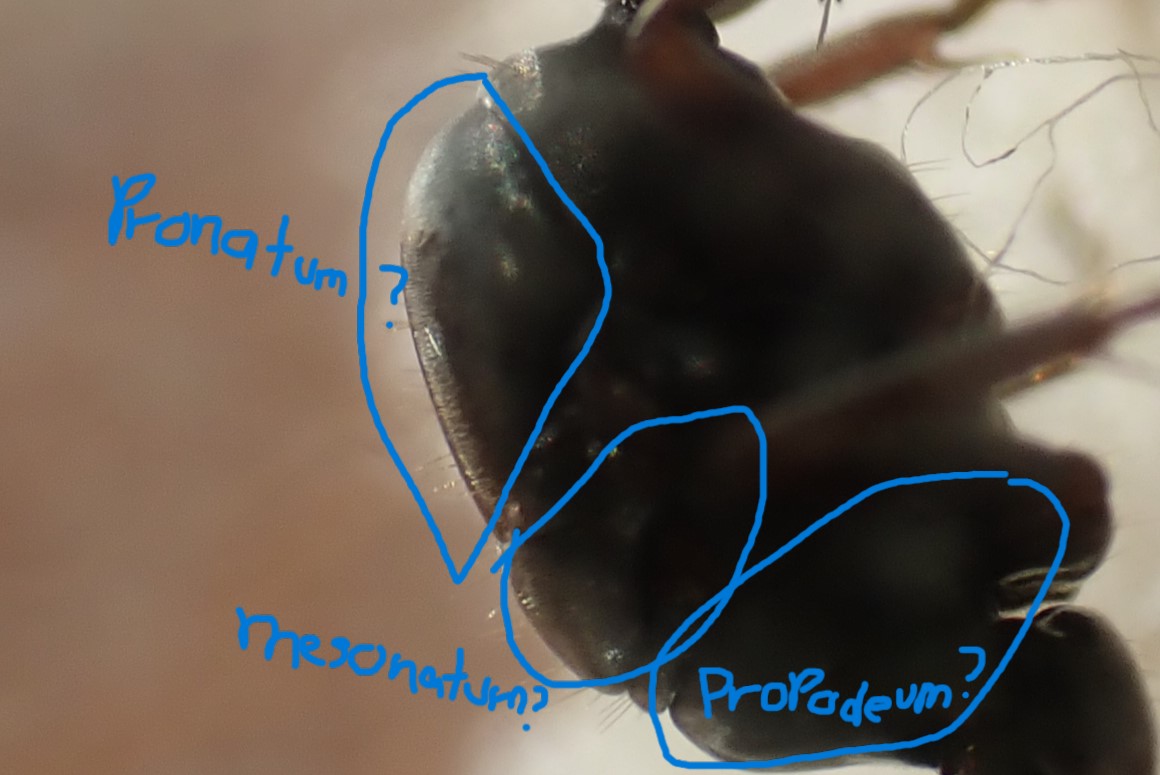
I do not have the wings so I do not know their color.
I am directly in the middle of the continent, so this is not very helpful. I guess since I am east of the Missouri, I would count myself as in the east part of the continent?
Maybe 3/6?
Body pilosity more abundant, particularly on pronotum, profemora and first gastric tergite; erect hairs of pronotum varying from 12 to 29 (mean = 18), lined on more than one row and usually reaching the tegulae; from 0 to 14 (mean = 6) erect hairs on the first gastric tergite exclusive of the posterior row; sometimes 1-3 hairs on occiput, ventral surface of head and prosternum; pubescence dense, sometimes normal, on the first three gastric tergites, dilute on the others . . . . . Formica podzolica
Profemora is the "femur" of an insect on the front set of legs. I don't seem to see any on this queen, especially the "abundant" amount the key wants. I am not sure my camera is good enough for femur images though.
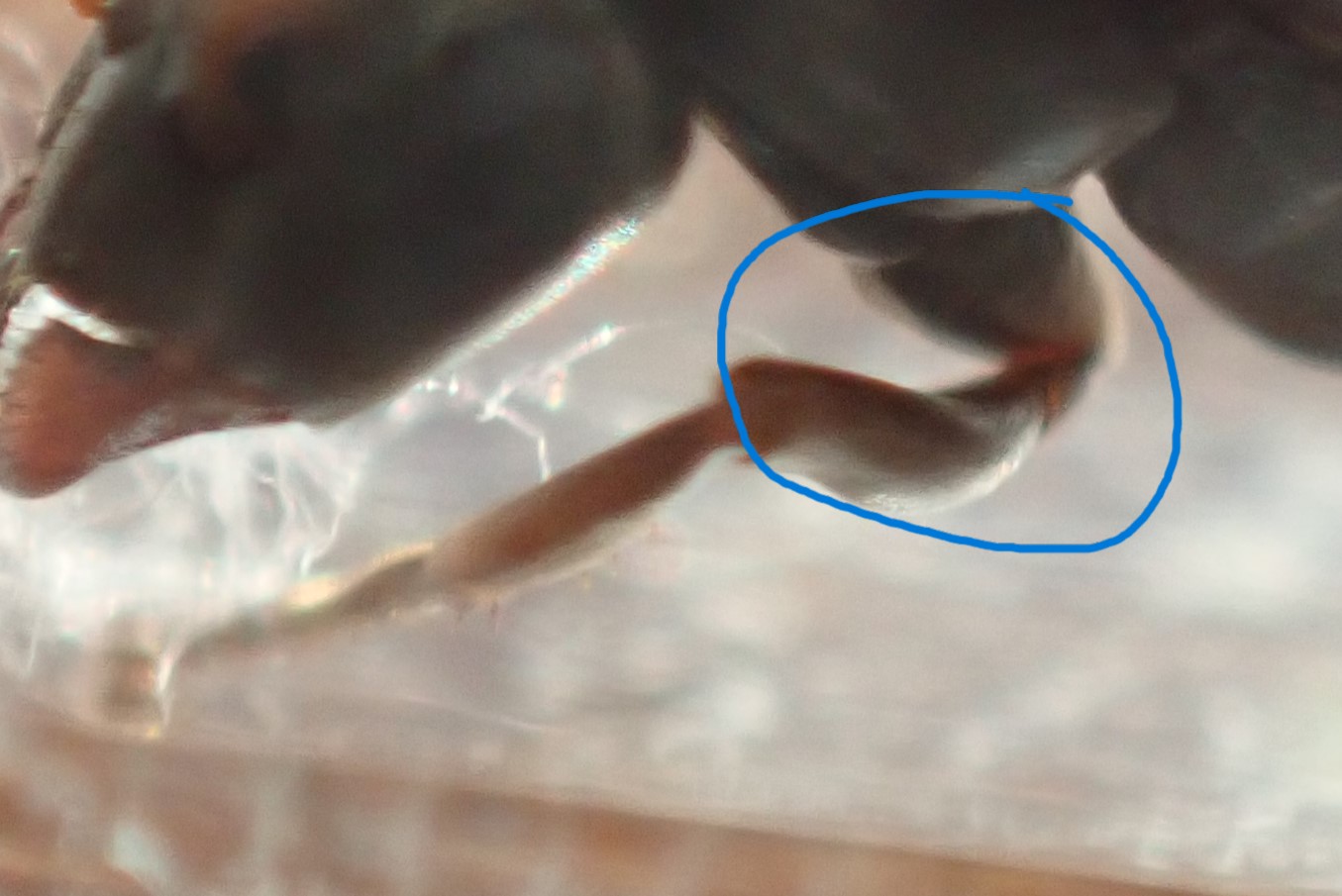
As mentioned above, the tegulae is where the wing meets the thorax. On the pronotum (first section of thorax) there are only about 6 hairs, so this criterion is not met.

The first gastric tergite on this queen is pretty spare, so not much to see here.

The occiput is the back underside of the head of an ant, ventral again means below or bottom, and prosternum refers to the bottom exoskeleton plate of the first segment of the thorax; the pronotum. Interestingly, there are many more than 3 hairs on the bottom of the prosternum.

Again, normal is a subjective word, but besides that, the first three gastric tergites have less hair than the last couple, so this does not seem to check out

0/6 criteria met
So what is this queen? I'm still not sure, as the tergite section is messing me up. Maybe I was counting backwards? Why is there constantly more at the end than beginning? Possibly a different species? This definitely raised more questions than answers, but I hope you learned something in the process and maybe feel a little more confident in attempting an ID yourself. For now, these past few hours will just have to end this thread with the exact same name for the queen, Formica cf subsericea.
Ants_Dakota
Edited by Ants_Dakota, September 29 2024 - 7:00 PM.






